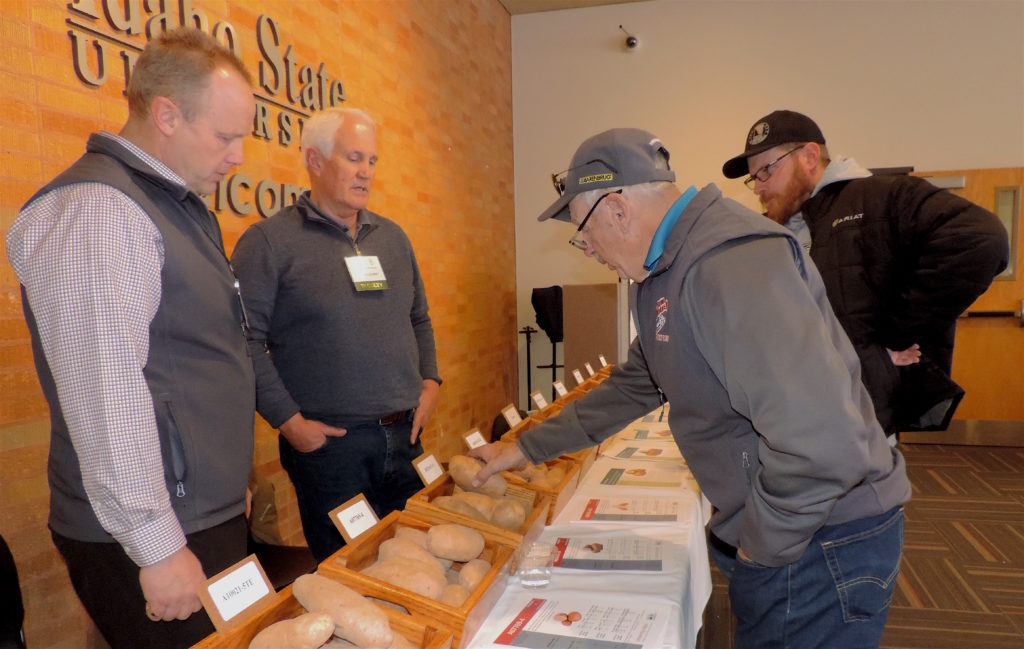
University of Idaho researchers offer tips on potato disease, harvesting, irrigation
Educational sessions were packed as potato growers learned about strategies to fight crop diseases at the 52nd Idaho Potato Conference, hosted by the University of Idaho at Idaho State University in Pocatello in late January.
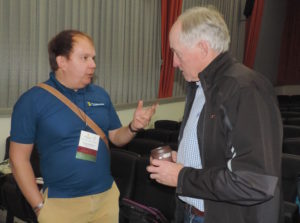
The conference was well attended with 582 registered participants and more who attended informally. Participants not only learned to control diseases, they also toured booths featuring the latest equipment, finance tools, potato varieties, fertilizers and irrigation.
“We heard great research presentations and had a lot of people take classes to become certified to apply restricted-use pesticides,” said Nick Blanksma, chairman of the Idaho Potato Commission, and a third-generation potato grower in Hammett, Idaho.
A 45-year exhibitor at the annual conference, Adrian Arp, 76, sold organic soil additives for Maz-zee S.A. International. A popular product, Pena Tron, contains bacteria and enzymes that improve soil and stimulate plant growth to ultimately increase yield.
“This event is among the best in the industry,” said Arp, who is based in Filer, Idaho. “It’s a chance to connect with our customers, develop new relationships, and learn the latest research to help growers.”
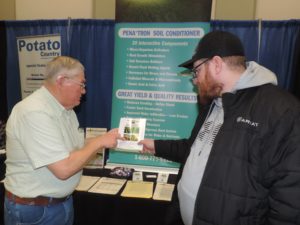
Another longtime exhibitor, Sprinkler Head Rebuilders from Buhl, has been participating in the conference for 39 years. Waive Stager’s six full-time employees refurbish brass impact sprinklers and end guns on pivots.
“We’re one of the few businesses nationwide that offers this service,” Stager said. “I remind people to service their sprinkler heads and other irrigation equipment before planting season starts.”
Idaho growers talked about last season’s challenges — hot then unusually cold weather toward the end of harvest.
To keep tuber pulp temperatures ideal on some days, harvest started at midnight and stopped at about 10 a.m., said Rick Carpentier, farm manager at J&R Farms in Burley, where Norkotah for fresh-pack and Ranger and Burbank for processors are grown.
“Then frost damage last October was a huge issue for all of us,” Carpentier said. “We left the potatoes in the ground for eight days until the temperatures warmed up again, then dealt with managing them in storage — drying them down so there wouldn’t be moisture.”
Advice from University of Idaho researchers
The timing of when to taper off irrigation before harvest is crucial, advised Howard Neibling, water management engineer at the UI’s Kimberly Research and Extension Center. If the soil is too moist, it can create conditions that encourage diseases to develop.
“Avoid over-irrigation and don’t overdo a good work,” he said.
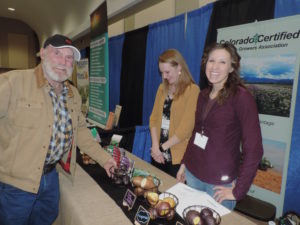
Take soil samples with an auger to determine moisture at a depth of at least one foot deep, he advised. When evapotranspiration (ET) begins to drop, it’s time to kill the vines. He suggested moisture in the top foot of the soil should be at about 70% or less at digging time.
Pamela Hutchinson, potato cropping systems weed scientist at UI’s Aberdeen Research and Extension Center, described the types of chemicals used to kill vines before harvest.
Sulfuric acid kills vines quickly — in about three days after application, she said. The potato skin will set faster with a faster vine kill. Reglone works fast to moderately fast with about a 95% kill rate in a week. Rely kills vines slowly.
Jeff Miller, a plant pathologist, president and chief executive officer of Miller Research in Rupert, described use of fungicides to combat soilborne pathogens that cause pink rot and Pythium leak.
“Proper irrigation management to avoid excessive moisture at harvest goes a long way to prevent the diseases,” he said. “When temperatures are over 70 degrees, it increases the risk of infection.”
The interior of potatoes affected by pink rot will turn pink after being sliced and exposed to warm air for about 15 to 20 minutes. Research has shown that adjusting soil pH by lime application in low pH soils can help prevent it.
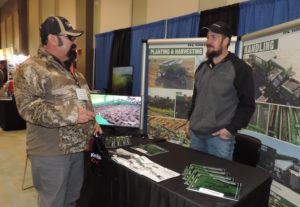
To manage it postharvest, he suggested using several fungicides containing mefenoxam/metalaxyl, phosphorous acid, cyazofamid or ethaboxam.
Potatoes with skin wounds can become infected with Pythium leak. The diseased potatoes are often extremely moist and in some cases when squeezed, clear liquid comes out. To avoid it, potatoes should be harvested at cooler time of day. He advised growers to make sure tuber pulp temperatures are 55 degrees Fahrenheit or lower in storage.
Unfortunately, a foliar phosphite fungicide program is not effective against Pythium leak, he said. Clearwater is more susceptible than Burbank, Alturas or Dakota.
Miller keeps his website updated with the latest potato research at www.millerresearch.com.
To avoid damaging potatoes’ skin and making them susceptible to disease, plant pathologist James Woodhall, advised allowing at least 21 days after vine kill for good skin set before harvest.
“Studies at the University of Idaho showed tubers harvested four weeks after vine kill developed less dry rot in storage compared to those two weeks after vine kill or green dug,” said Woodhall, who works at the UI Research and Extension Center in Parma. “Harvest when tuber pulp temperatures are between 45 and 65 degrees Fahrenheit.”
Woodhall said a soilborne fungus Rhizoctonia solani AG3-PT is a predominant strain in potato seed in Idaho. Symptoms include reduced tuber number and size, misshapen tubers and black scurf.
Research has shown tubers are more susceptible to rhizoctonia when planted in soil below 55 degrees Fahrenheit.
Phillip Wharton, associate professor at the Aberdeen Research and Extension Center, said in-furrow applications to protect seed from disease include Quadris, Elatus, Ridomil Gold 4SL and Moncut. Seed treatments include Maxim MZ, Maxim 4FS, Bark PST, Moncoat MZ and Cruiser Maxx. Seed treatments are targeted to control fusarium seed piece decay and sprout rot.
Late blight is not common in Idaho, but if it does occur, he recommended use of a seed treatment with Mancozeb, such as Maxim MZ or Moncoat MZ.
Another disease, Fusarium dry rot, is the main cause of seed-piece decay and sprout rot in Idaho, Wharton said. He suggested storing potato seed at 37 to 39 Fahrenheit because fusarium is dormant at those temperatures.
When seed is received in spring, check for signs of damage in transit, like odors and liquefaction, he advised.
“After careful unloading, store the seed at 40 to 42 degrees Fahrenheit and 85 to 90% relative humidity and keep it well ventilated,” Wharton said. “When cutting seed, clean and disinfect cutting equipment, preferably daily and definitely between seed lots.”
Both Wharton and Woodhall encouraged growers to have their soil tested for pathogens at the university’s research centers. Wharton said to make sure to get the correct depth for soil samples. For example, pathogens that cause black dot are usually in the top 3 inches of soil, while nematodes are a foot deep.
“Soil tests are useful for troubleshooting persistent issues,” Woodhall said.
Top photo: Jackson Allred, who raises Norkotah, Ranger and Burbanks in Burley, Idaho, talks about potato varieties with Allan Landon, a sales rep with Syngenta in Idaho Falls, left, and Jeff Stark, director of potato variety development programs for U of I. (Dianna Troyer)







